ITGAM
-
Official Full Name
integrin, alpha M (complement component 3 receptor 3 subunit) -
Overview
This gene encodes the integrin alpha M chain. Integrins are heterodimeric integral membrane proteins composed of an alpha chain and a beta chain. This I-domain containing alpha integrin combines with the beta 2 chain (ITGB2) to form a leukocyte-specific integrin referred to as macrophage receptor 1 ('Mac-1'), or inactivated-C3b (iC3b) receptor 3 ('CR3'). The alpha M beta 2 integrin is important in the adherence of neutrophils and monocytes to stimulated endothelium, and also in the phagocytosis of complement coated particles. Multiple transcript variants encoding different isoforms have been found for this gene. -
Synonyms
ITGAM;integrin, alpha M (complement component 3 receptor 3 subunit);CR3A;MO1A;CD11B;MAC-1;MAC1A;SLEB6;integrin alpha-M;CR-3 alpha chain;antigen CD11b (p170);leukocyte adhesion receptor MO1;CD11 antigen-like family member B;macrophage antigen alpha polypeptide;cell surface glycoprotein MAC-1 subunit alpha;neutrophil adherence receptor alpha-M subunit
Recombinant Proteins
- Human
- Mouse
- Rat
- E.coli
- Wheat Germ
- HEK293
- Human
- Human Cells
- In Vitro Cell Free System
- Mammalian Cells
- GST
- His
- Non
- Avi
- Fc
- SUMO
- DDK
- Myc
- Flag
Background
What is ITGAM Protein?
ITGAM, or CD11b, is a protein vital to the immune system, part of integrins that help cells stick together and communicate. Found on some white blood cells, it aids their movement to infection or injury sites, playing a key role in defense. ITGAM is involved in inflammation and healing, acting as a bridge between cells to trigger responses. Its dysfunction is linked to diseases like autoimmune disorders and cancers, making it a focus for potential treatments.What is the Function of ITGAM Protein?
ITGAM, also known as CD11b, is crucial for immune system function. It helps white blood cells stick to and move across other cells and tissues, an essential part of responding to infections or injuries. By forming part of integrins, ITGAM enables immune cells to travel where the body needs them most, like a GPS guiding them to wounds or sites of infection. It's involved in inflammatory responses and healing, allowing immune cells to take action effectively. ITGAM also plays a role in clearing out dead cells and debris, contributing to overall tissue health. Its activity is significant in maintaining a balanced immune response, and any imbalance can lead to issues like autoimmune diseases or impact cancer progression.ITGAM Related Signaling Pathway
ITGAM, or CD11b, plays a key role in signaling pathways that manage the immune response. When it activates, ITGAM pairs with CD18 to form the Mac-1 receptor, essential for white blood cells to stick to and pass through blood vessels, heading to infection or inflammation sites. This interaction prompts signals that produce inflammation-related molecules, aiding in pathogen defense. ITGAM also helps clear away immune complexes and dead cells, crucial for ending inflammation and avoiding tissue damage. Changes in these pathways can lead to autoimmune and chronic inflammatory diseases, highlighting them as targets for new treatments.ITGAM Related Diseases
ITGAM, or CD11b, is tied to several health issues because of its immune system role. When it malfunctions, it can lead to autoimmune diseases like lupus, where the body mistakenly attacks itself. In lupus, ITGAM's signaling and cell movement roles are off, contributing to the disease. This protein is also involved in ongoing inflammatory conditions like rheumatoid arthritis, where constant inflammation harms tissues. Additionally, ITGAM can influence cancer by affecting how immune cells interact with tumors. Understanding ITGAM's role in these diseases might help in creating specific treatments to better manage or prevent them.
Fig1. Model of SLE-associated genetic variants in the immune response. (Yun Deng, 2010)
Bioapplications of ITGAM
Integrin alpha M (ITGAM), or CD11b, is important in the immune system. It's involved in how white blood cells stick to and travel through blood vessel walls, which is key during inflammation and helps keep tissues working properly. Found mainly on cells like macrophages and neutrophils, ITGAM helps in the body's first line of defense against invaders. Researchers are looking into its use in diagnosing autoimmune diseases like lupus, since ITGAM levels can show how active the disease is. There are also new treatments in the works targeting ITGAM to help control inflammation without messing up the immune system’s normal functions. As we learn more, ITGAM could lead to better ways to treat and diagnose diseases linked to the immune system.Case Study
Case Study 1: Ke J. et al. Cancer Med. 2024
Colorectal cancer (CRC) starts in the digestive tract, and its causes and progression are not fully understood. Researchers are looking at tumor-associated macrophages to learn more. This study found that CD11b levels rise as CRC advances, linked to poorer outcomes, while CD86 decreases. CD133 also increases and appears with CD11b, possibly aiding cancer growth. In mouse models, the Wnt pathway boosted CD133 and CD11b. Lab tests showed high CD11b raised CD133 in cancer cells. In mice, cultured samples showed more CD133 and β-Catenin, pointing to pathways involved in CRC growth.-
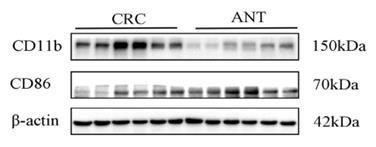 Fig1. Protein levels of CD86/CD11b in CRC tissues and adjacent normal tissues were detected by Western blotting.
Fig1. Protein levels of CD86/CD11b in CRC tissues and adjacent normal tissues were detected by Western blotting. -
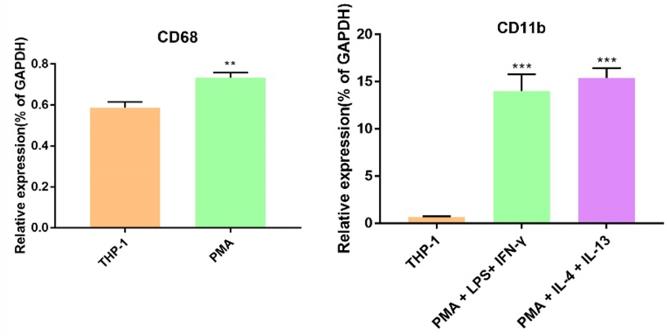 Fig2. PMA stimulation induces differentiation of THP-1 cells into macrophages, further promoting increased expression of CD11b.
Fig2. PMA stimulation induces differentiation of THP-1 cells into macrophages, further promoting increased expression of CD11b.
Case Study 2: Zhou C. et al. Transl Cancer Res. 2024
Acute myeloid leukemia (AML) is the second most common leukemia in adults, with a challenging prognosis. This study sought new targets and markers for AML. It found high ITGAM expression in AML patients, linked to worse survival. Lowering ITGAM in AML cells reduced growth and increased cell death, causing G1 phase arrest and reducing certain proteins like cyclin D1. ITGAM was found to enhance the MAPK signaling pathway by influencing phosphorylation while leaving total protein levels unchanged.-
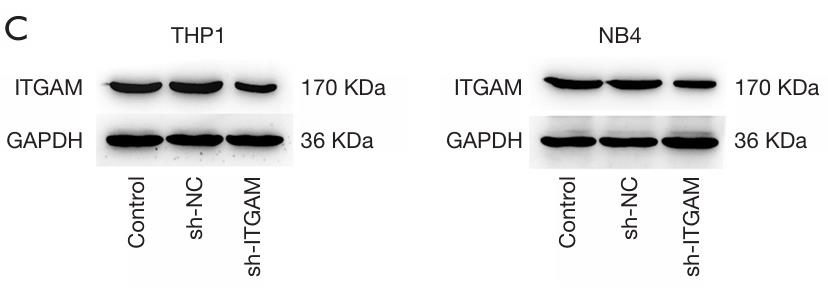 Fig3. A Western blot analysis of ITGAM protein production in the THP1 and NB4 sh-ITGAM and sh-NC cells.
Fig3. A Western blot analysis of ITGAM protein production in the THP1 and NB4 sh-ITGAM and sh-NC cells. -
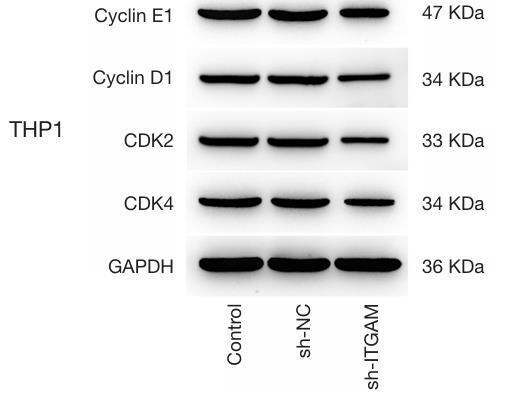 Fig4. ITGAM silencing inhibited the amounts of cell cycle-related proteins in the THP1 cells.
Fig4. ITGAM silencing inhibited the amounts of cell cycle-related proteins in the THP1 cells.
Quality Guarantee
High Purity
-
.jpg) Fig1. SDS-PAGE (ITGAM-1798H)
Fig1. SDS-PAGE (ITGAM-1798H) -
.jpg) Fig2. SDS-PAGE (ITGAM-1799H)
Fig2. SDS-PAGE (ITGAM-1799H)
Involved Pathway
ITGAM involved in several pathways and played different roles in them. We selected most pathways ITGAM participated on our site, such as Rap signaling pathway,Phagosome,Cell adhesion molecules (CAMs), which may be useful for your reference. Also, other proteins which involved in the same pathway with ITGAM were listed below. Creative BioMart supplied nearly all the proteins listed, you can search them on our site.
| Pathway Name | Pathway Related Protein |
|---|---|
| Pertussis | TICAM2,IL-8,RHOA,CASP7,CALML3,CD14,GM5077,PYCARD,C1RA,MAPK12 |
| Transcriptional misregulation in cancer | PBX3,MEN1,RXRG,TCF3,HIST1H3G,IGF1,PAX5,ELANE,HOXA10,CD14 |
| Tuberculosis | PPP3R1,NFYC,IFNA13,MAPK10,IFNA16,EEA1,RAB7,TGFB1,KSR1,RHOA |
| Phagosome | MRC1,CTSSB.2,TUBB5,ATP6V1C1A,ATP6V0A2B,TUBA3D,STX7,ATP6V1BA,TUBB2,STX12 |
| Leishmaniasis | PRKCB,HLA-DRB5,MARCKSL1,NCF2,IL12B,ITGB1,Itgam&Itgb2,FCGR1A,HLA-DQA1,IL1A |
| Legionellosis | CXCL1,IL1B,HSPA1B,EEF1A1,NAIP6,HSPA8,NLRC4,TLR5,ITGB2L,C3 |
| Regulation of Actin Cytoskeleton | ITGB1,MAP2K2A,MYLK4,FGF5,GSNA,FGF20,RHOA,FGF13A,RAF1,TMSB4X |
| Cell adhesion molecules (CAMs) | PVRL1B,Siglec1,ITGB1,CD80,CLDN17,ITGA8,SELE,HLA-B,CLDN3,CD2 |
| Hematopoietic cell lineage | IL6,CD38,IL11RA,MS4A1,CD34,IL11RA2,CD9,CD8B1,GM13305,GYPA |
-
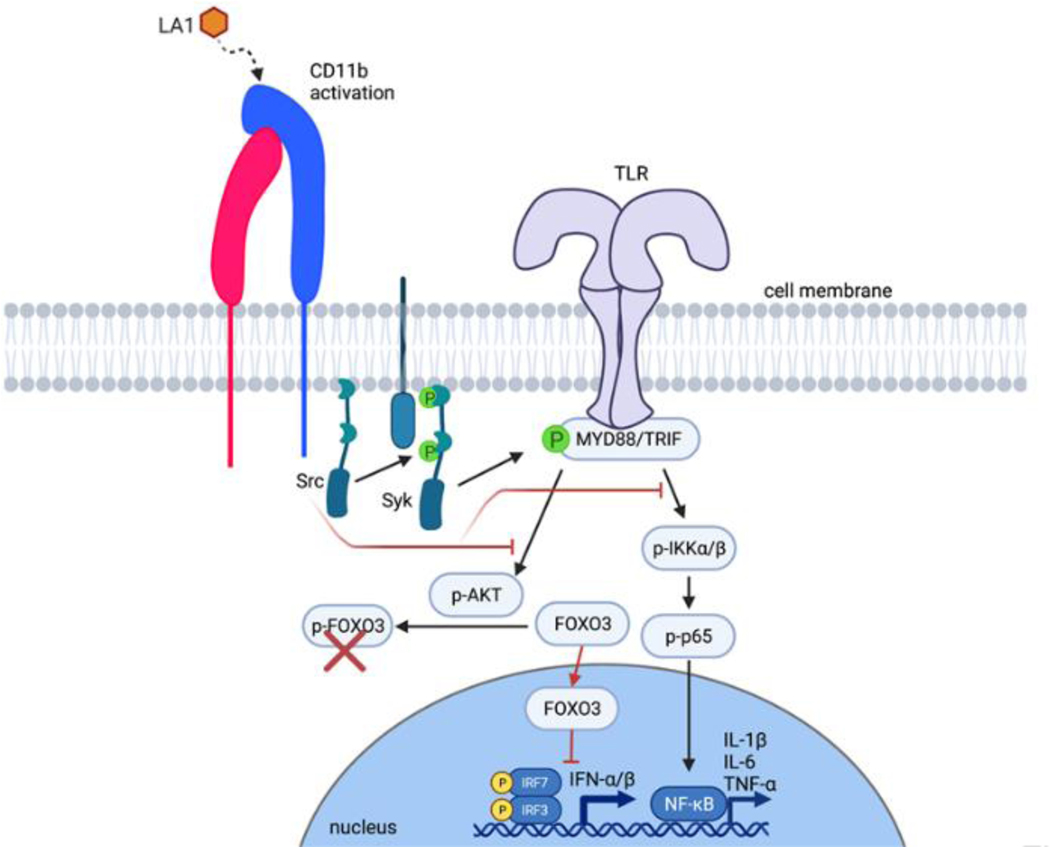 Fig1. TLR-dependent signaling pathways are modulated by allosteric activation of CD11b. (Veronica Villanueva, 2022)
Fig1. TLR-dependent signaling pathways are modulated by allosteric activation of CD11b. (Veronica Villanueva, 2022) -
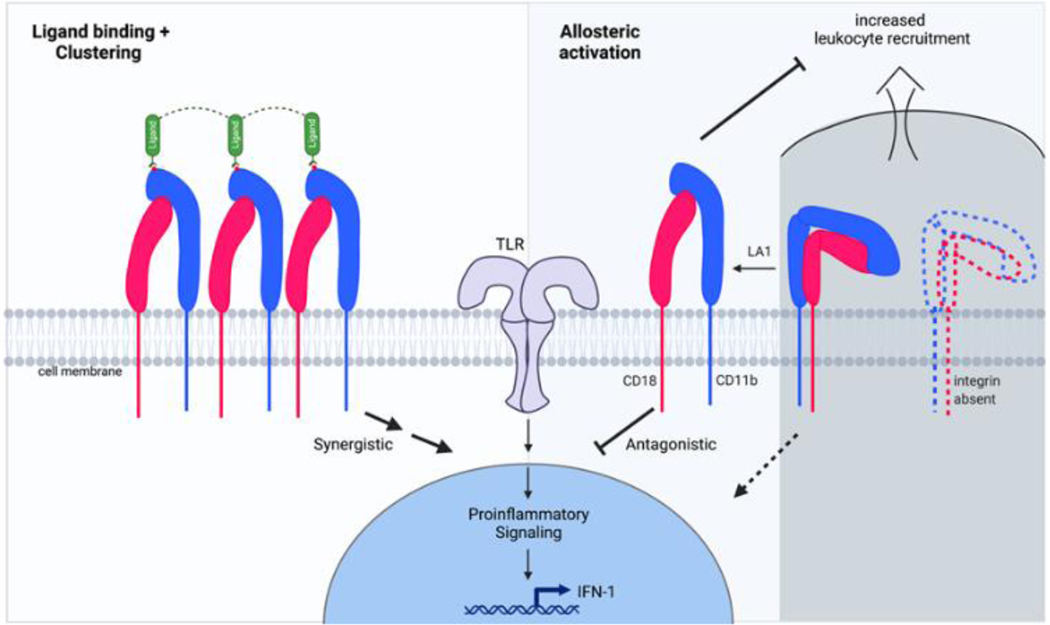 Fig2. The many roles of CD11b in promoting or suppressing inflammatory pathways. (Veronica Villanueva, 2022)
Fig2. The many roles of CD11b in promoting or suppressing inflammatory pathways. (Veronica Villanueva, 2022)
Protein Function
ITGAM has several biochemical functions, for example, glycoprotein binding,heparan sulfate proteoglycan binding,heparin binding. Some of the functions are cooperated with other proteins, some of the functions could acted by ITGAM itself. We selected most functions ITGAM had, and list some proteins which have the same functions with ITGAM. You can find most of the proteins on our site.
| Function | Related Protein |
|---|---|
| opsonin binding | CLEC7A,Itgam&Itgb2 |
| heparan sulfate proteoglycan binding | GPC3,PLA2G2D,SEMA5A,AZU1,HRG,GPC5,UBE4A,HPSE2,FST,SLIT2 |
| protein binding | KIF20A,CEP170L,WHSC1,MAMSTR,CD276,ATP4B,RNH1,CD200R3,UBE2V2,STAMBP |
| metal ion binding | EGR3,WBP7,ZFP593,ZNF281B,PDE1C,IDO2,ZFP551,IREB2,SIRT4,LNX2B |
| heparin binding | CXCL13,SMOC2,PGF,ELANE,SERPINA5,WISP2,PCSK6,MDK,Epy,APOA5 |
| glycoprotein binding | FBXO2,LRRK2,HFE2,IDE,VIM,SDCBP,ITGA3,TFRC,F7,FBXO6 |
Interacting Protein
ITGAM has direct interactions with proteins and molecules. Those interactions were detected by several methods such as yeast two hybrid, co-IP, pull-down and so on. We selected proteins and molecules interacted with ITGAM here. Most of them are supplied by our site. Hope this information will be useful for your research of ITGAM.
CLEC4M;fibrinogen_human_complex;crlkekhc
Resources
Research Area
NeuroinflammationMyeloid Lineage Markers
Natural Killer Cells (NK Cells) Markers
Natural Killer (NK) Cell CD Antigen
Granulocyte Markers
Integrins
Conventional/Classical Dendritic Cells
Inflammatory/Monocyte-derived Dendritic Cells
Langerhans and Dermal Dendritic Cells
Basophils
Neutrophils
B Cell Chemotaxis, Migration, and Adhesion
T Cell Migration
CD Antigen (Granulocyte Markers)
Monocyte Markers
MDSC Phenotyping - Positive Markers
Related Services
Related Products
References
- Rosetti, F; Chen, YF; et al. A Lupus-Associated Mac-1 Variant Has Defects in Integrin Allostery and Interaction with Ligands under Force. CELL REPORTS 10:1655-1664(2015).
- Blanco, FJ; Ojeda-Fernandez, L; et al. Genome-Wide Transcriptional and Functional Analysis of Endoglin Isoforms in the Human Promonocytic Cell Line U937. JOURNAL OF CELLULAR PHYSIOLOGY 230:947-958(2015).


